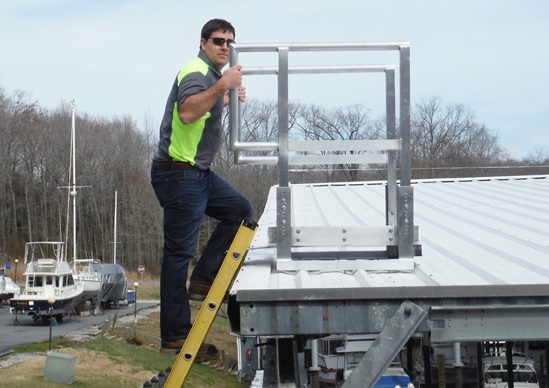Why Safety on Your Commercial Building’s Roof is Important
When it comes to maintaining your commercial building, ensuring the safety of everyone who works on your property is a top priority. This is especially true for those who work on the roof of your building. Mechanics, HVAC technicians, and other professionals may need to access your building’s roof to perform maintenance, inspections, and repairs.
However, working on a roof can be dangerous if proper safety measures are not in place. Falls from heights can result in serious injury or even death. As a building owner, it’s your responsibility to ensure that everyone who works on your property is safe, including those who work on your roof.
OSHA Regulations for Commercial Building Roofs
The Occupational Safety and Health Administration (OSHA) has specific regulations in place to ensure the safety of workers on commercial building roofs. According to OSHA’s Walking/Working Surfaces Standard (1910.28), any employee on a walking/working surface with an unprotected side or edge which is 4 feet or more above the lower level, must be protected from falling. Employers and Property Owners can protect their employees and subcontractors from falling by installing guardrail systems or safety nets, or by requiring the use of Personal Fall Arrest Systems (PFAS), travel restraints, or positioning systems.
Essential Safety Measures for Your Commercial Building’s Roof
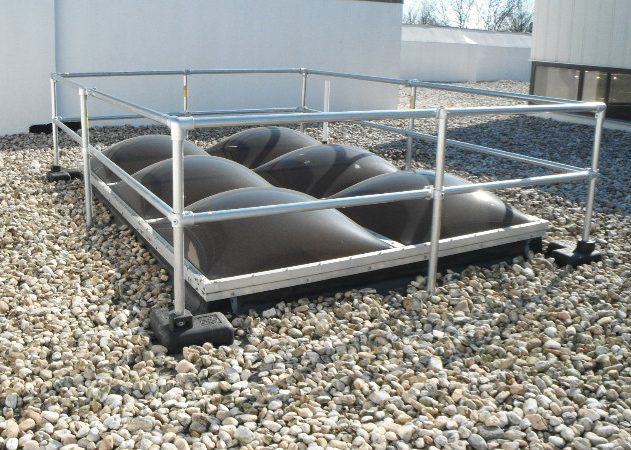
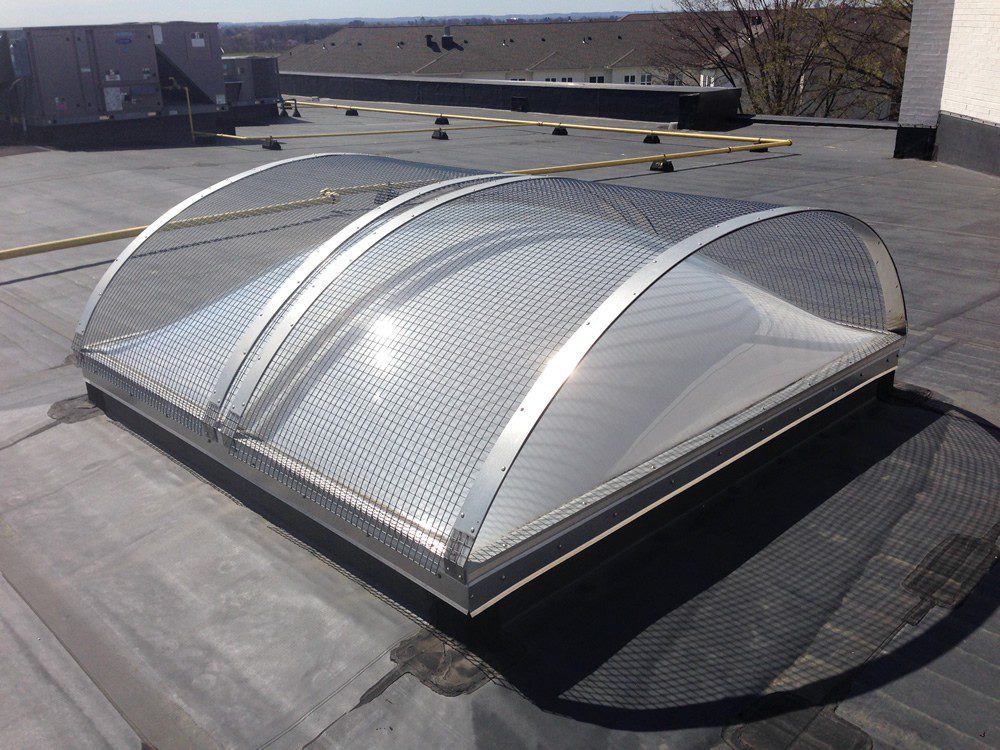
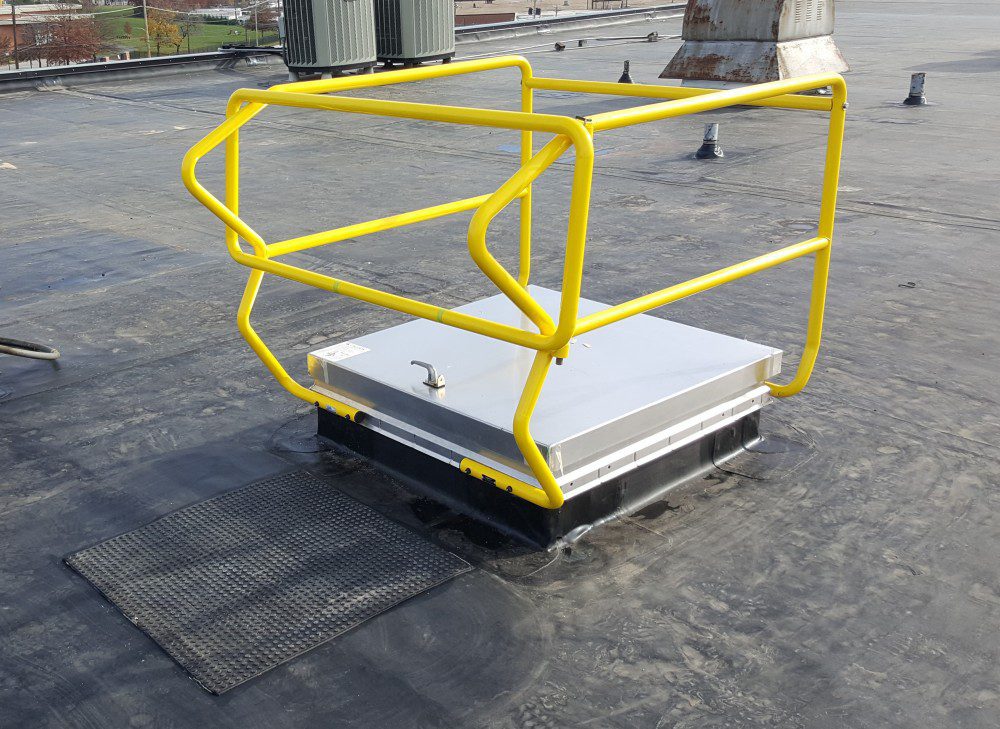
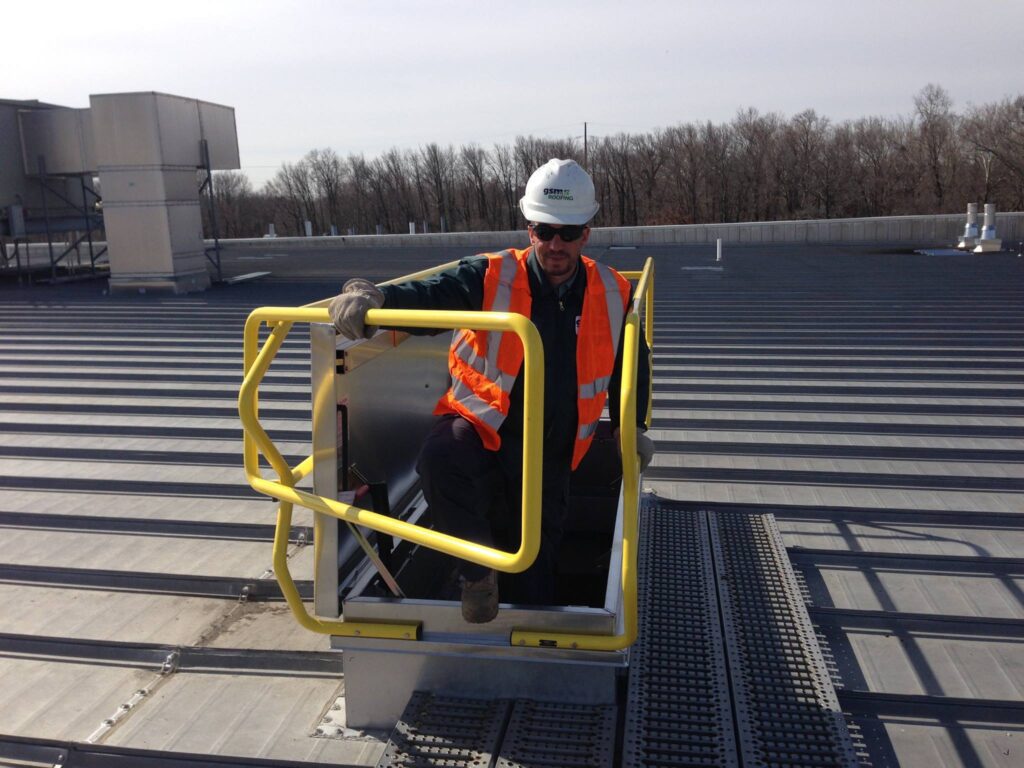
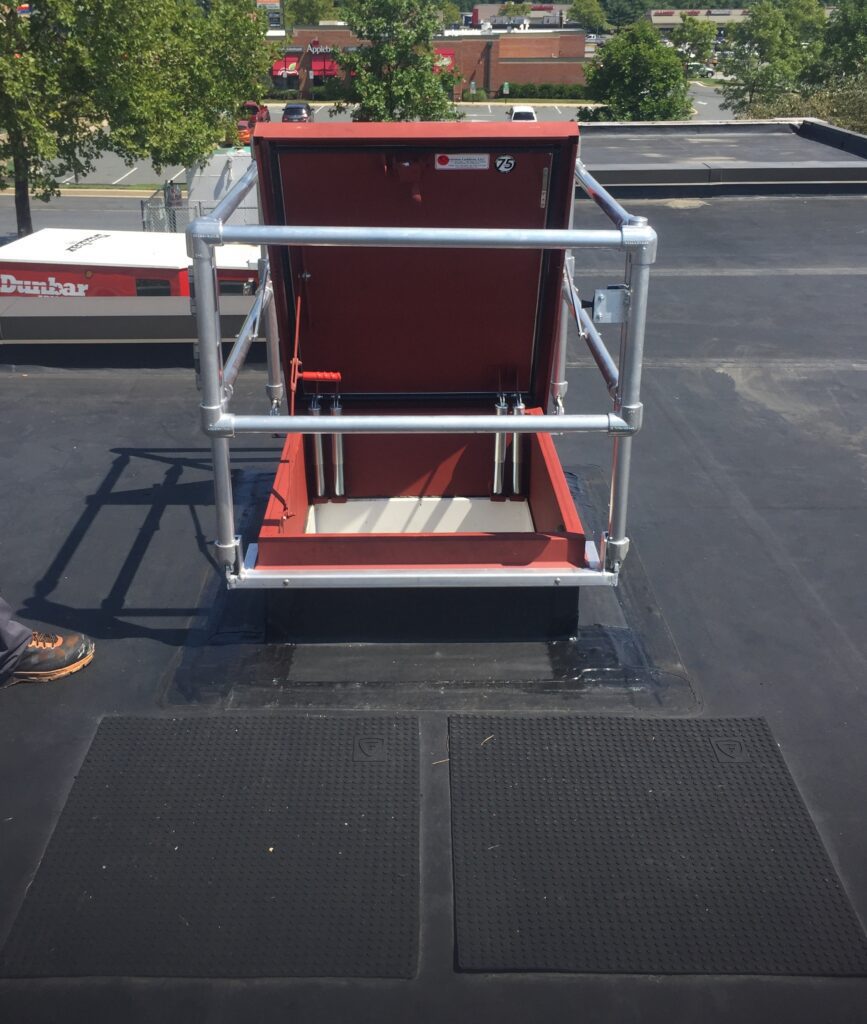
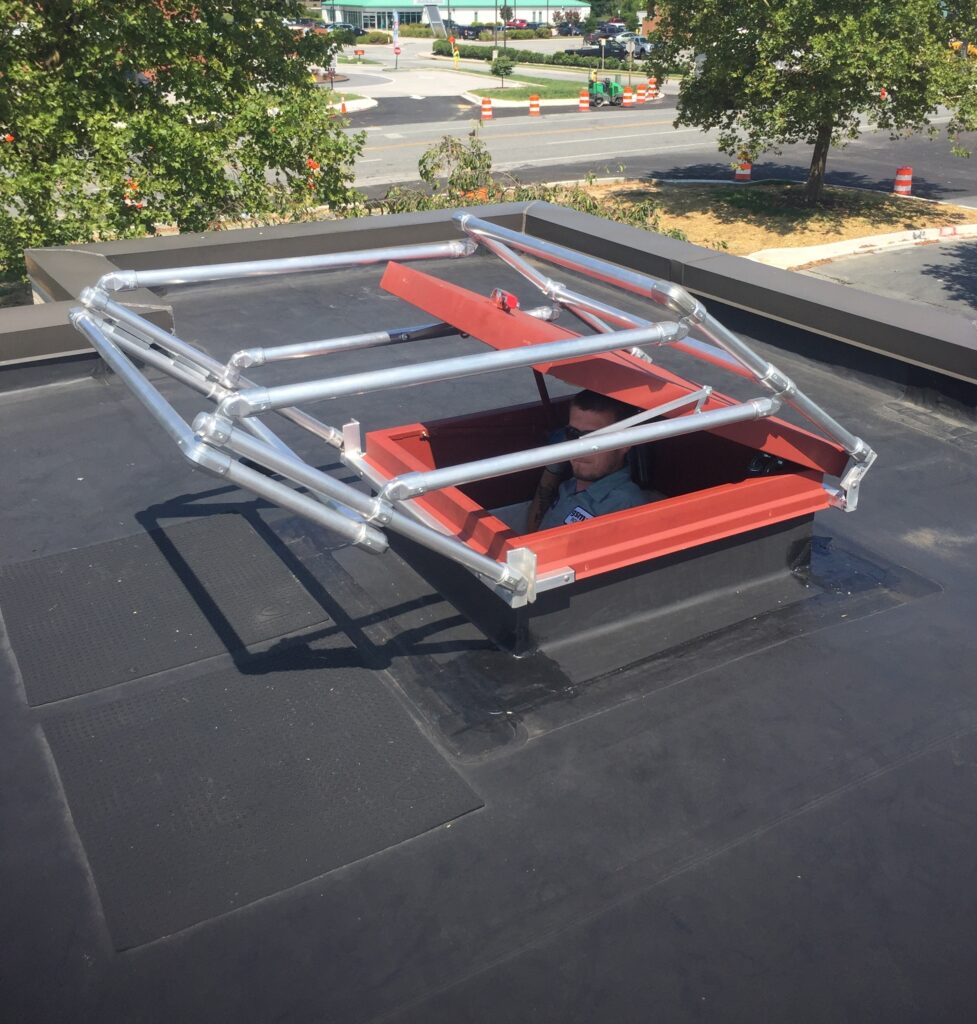
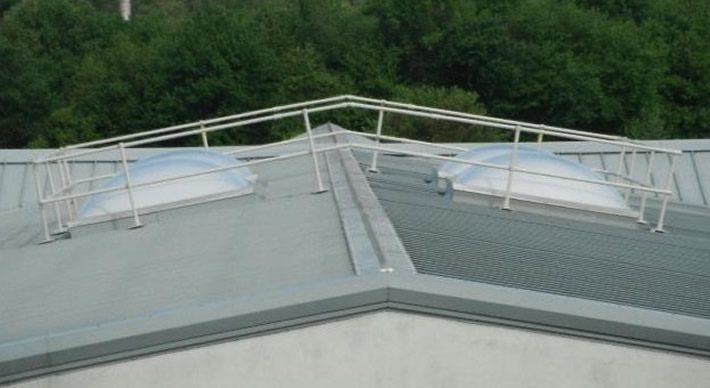

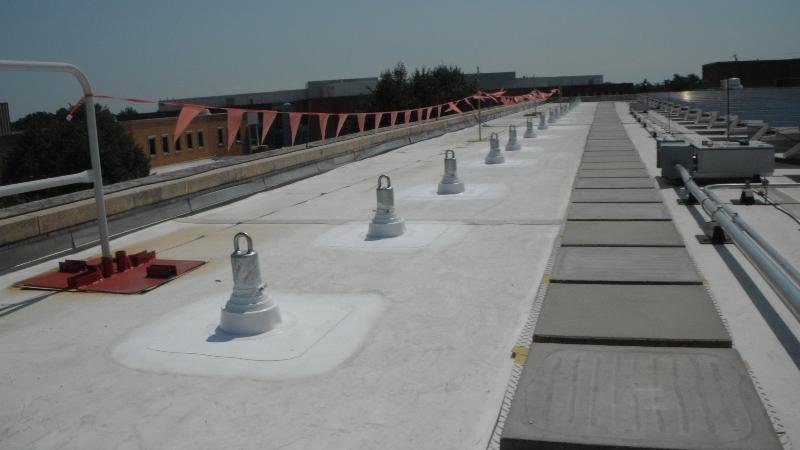
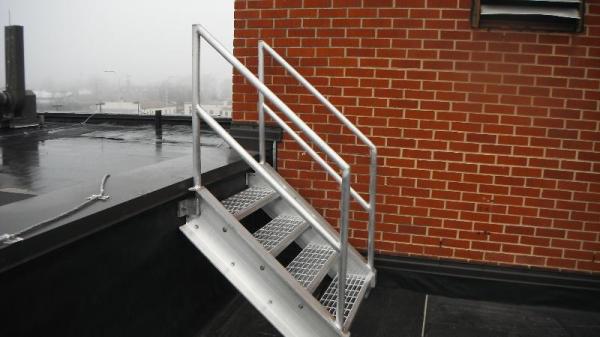
The most effective way to protect yourself and others from falling from a roof is by installing a permanent means of protection. Such items include:
Perimeter Railings
Installing perimeter railings around the edges of your roof can help prevent falls. These railings should be sturdy, have a height of 42 inches, and be able to withstand the force of at least 200 pounds. Additionally, the railings should be constructed in a way that prevents people from climbing over or under them.
Skylight Cages
If your building has skylights, it’s important to install cages around them to prevent falls. Skylight cages should be made of sturdy materials that can withstand a force of at least 200 pounds.
Roof Hatch Protection
Roof hatches are another potential hazard on a commercial building’s roof. Installing protective covers or guardrails around roof hatches can prevent falls and ensure the safety of anyone accessing the roof through the hatch.
Permanent Anchorage Points & Warning Signs
Tie-off points provide a secure anchor point for workers who need to use safety harnesses while on the roof. These points should be able to support a force of at least 5,000 pounds and be placed at strategic locations throughout the roof.
Perimeter Warning Lines
Perimeter warning lines can be used to alert people of the edge of the roof and prevent them from accidentally walking too close. These lines should be at least 6 feet from the edge of the roof and be clearly visible.
Conclusion
Ensuring safety on your commercial building’s roof is crucial. By implementing safety measures such as perimeter railings, skylight cages, roof hatch protection, perimeter warning lines, and tie-off points, you can help prevent falls and ensure the safety of everyone who works on your property. Safety should always be a top priority. Remember to always follow OSHA regulations and consult with professionals to ensure that your roof is as safe as possible for workers.
GSM Roofing has over 75 years of experience designing, manufacturing, and installing roof safety systems that help prevent the most common types of roof accidents. If you have questions about OSHA’s latest roofing regulations, please feel free to contact us.


